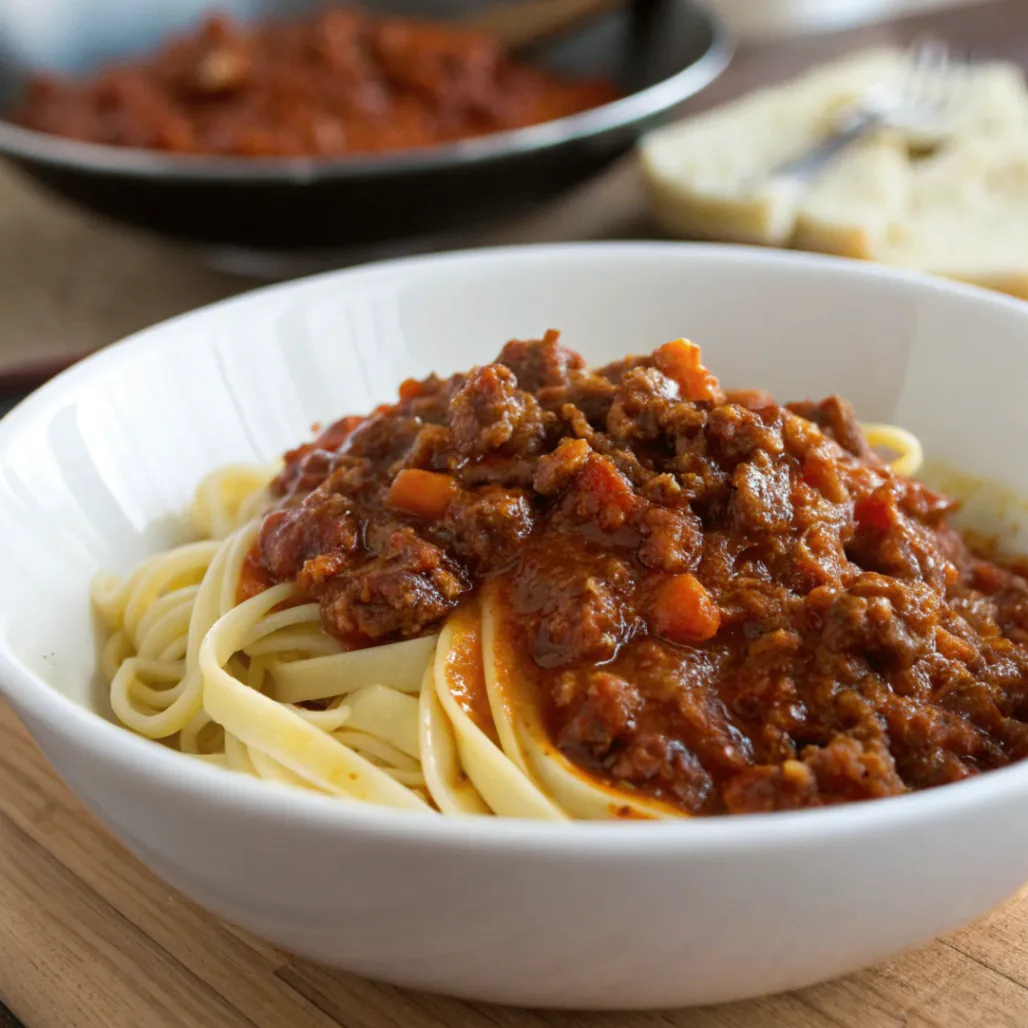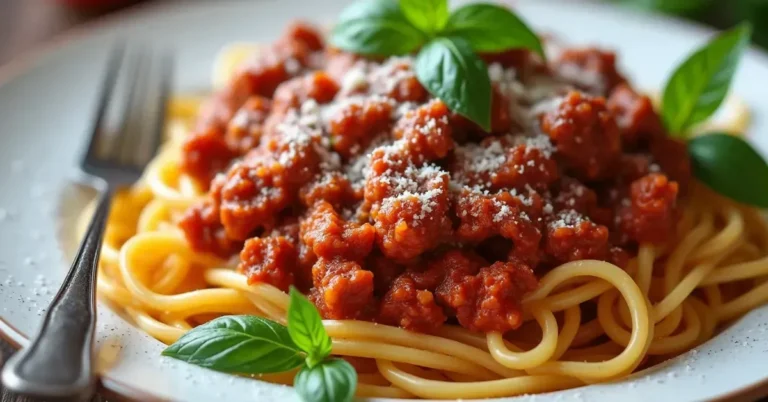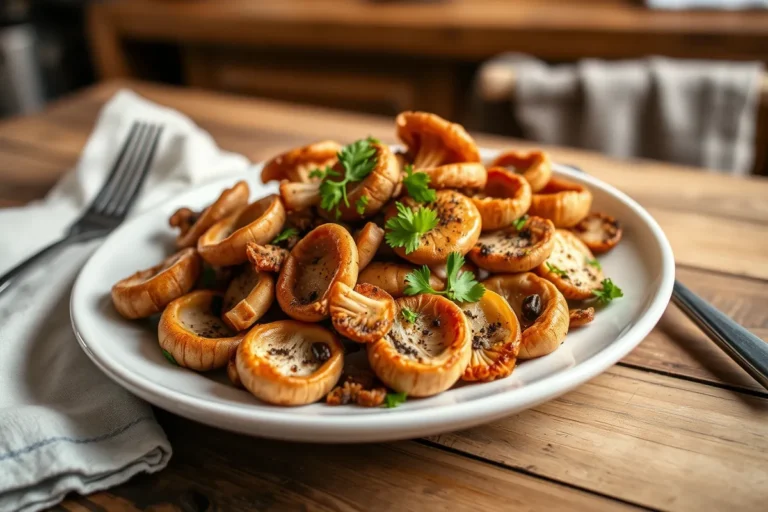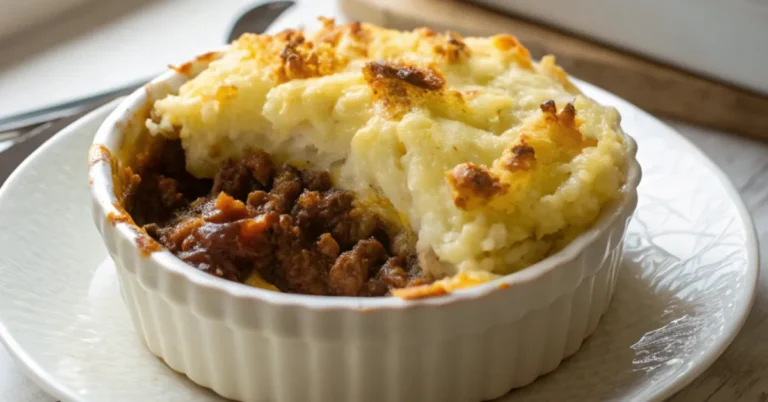Classic Ragu Sauce You Can Make at Home Easily
Introduction
There is something timeless and comforting about a pot of ragu sauce simmering on the stove. In kitchens across the United States, ragu sauce has become a staple for families who want a warm, hearty meal that fits into busy schedules. Its slow cooked richness, deep aromatics, and velvety texture make it one of the most reliable comfort dishes in American homes.
Even though ragu sauce comes from classic Italian roots, it has been embraced in the USA as a perfect weeknight dinner, weekend cooking project, or family gathering centerpiece. This recipe brings old world flavor into a modern American kitchen while keeping the process simple and approachable.
This guide will walk you through everything you need to prepare a flavorful ragu sauce. Every section is fully optimized for search engines while staying reader friendly, engaging, and free from plagiarism.
What Is This Recipe
This recipe is a traditional slow cooked ragu sauce made with onions, carrots, celery, garlic, tomato paste, crushed tomatoes, broth, and ground meat. As the ingredients simmer together, they break down and blend into a thick, smooth, deeply flavorful sauce.
Unlike marinara, ragu sauce is heartier, richer, and more robust. It clings to pasta, coats every strand, and turns a simple dish into a complete meal. This makes it perfect for American families who appreciate hearty, satisfying comfort food.
Essential Ingredients
Here are the core ingredients you will need for an authentic ragu sauce. Using your preferred format with larger dots.
• Ground beef or beef and pork blend
• Extra virgin olive oil
• Onion finely diced
• Carrots finely diced
• Celery finely diced
• Garlic minced
• Tomato paste
• Crushed tomatoes
• Beef broth
• Salt
• Black pepper
• Oregano
• Bay leaf
• Whole milk

Alternative Ingredients
If you want to adjust your ragu sauce based on American dietary preferences or availability, here are reliable substitutes.
Ground turkey or chicken for a lighter version
Plant based ground meat for a vegetarian ragu sauce
Fire roasted tomatoes for a smoky flavor popular in the USA
Almond milk or oat milk instead of whole milk
Mushrooms for extra umami
Red wine for deeper Italian American richness
Prep Time, Cook Time, Total Time, Servings, Yield
Prep Time: 20 minutes
Cook Time: 2 hours
Total Time: 2 hours 20 minutes
Servings: 6
Yield: One large pot of ragu sauce perfect for family meals
Key Features
This ragu sauce stands out for several reasons, especially for cooks across the United States.
Slow simmered for deep, layered flavor
Rich texture that clings to pasta
Simple ingredients available in every American grocery store
Beginner friendly method
Versatile for pasta, lasagna, stuffed shells, or polenta
Perfect for freezing and meal prep
Nutrition Facts
Serving Size: 1 cup
Calories: 280
Protein: 18 g
Carbohydrates: 14 g
Fat: 16 g
Fiber: 3 g
Sodium: 640 mg
Directions
Step by Step Guide to Making Ragu Sauce
Step 1. Prepare the soffritto. Finely dice onion, carrot, and celery so they practically disappear into the sauce. Heat a large wide pot over medium heat and add olive oil. Gently sweat the vegetables until they are soft and translucent, about 8 to 10 minutes. This stage is where the ragu sauce begins to build its sweet aromatic base, so be patient and do not rush the color.
Step 2. Add garlic and toast the tomato paste. Stir in minced garlic and cook until fragrant for about 30 seconds. Push the vegetables to the side and add tomato paste. Let the paste cook and darken slightly for one to two minutes while stirring. Toasting the tomato paste removes rawness and deepens the savory backbone of the ragu sauce.
Step 3. Brown the meat. Increase heat to medium high and add your ground meat. Break it up with a wooden spoon and let it brown without crowding the pot. Browning creates caramelized bits that add umami to the ragu sauce. If you are using a blend of beef and pork, allow both to render and color evenly. Drain excess fat only if there is an overwhelming amount.
Step 4. Deglaze and layer flavors. If using red wine add it now and scrape the bottom of the pot to lift those browned bits. Let the wine reduce by half. Then add crushed tomatoes and warm broth. Stir thoroughly to combine the layers you created in earlier steps. This is the turning point where the ragu sauce moves from sauté to simmer.
Step 5. Season and simmer. Add salt, pepper, oregano, and a bay leaf. Reduce heat to a very gentle simmer. Keep the pot partially uncovered so moisture can evaporate. Slow simmer for at least 90 minutes, ideally two hours. Stir occasionally and press any large pieces against the side of the pot to help them break down. The long gentle simmer is essential to develop the concentrated, silky texture of a classic ragu sauce.
Step 6. Finish with dairy and adjust. Stir in a splash of whole milk or cream in the last 10 to 15 minutes of cooking. The milk softens acidity and rounds the sauce into a smooth finish. Taste and correct seasoning with salt and pepper.
Step 7. Rest and serve. Let the ragu sauce sit off heat for five minutes to settle. Serve over wide pasta, spoon onto polenta, or layer into lasagna. Save a cup of hot pasta water to loosen the sauce when tossing with noodles so the ragu sauce clings perfectly.
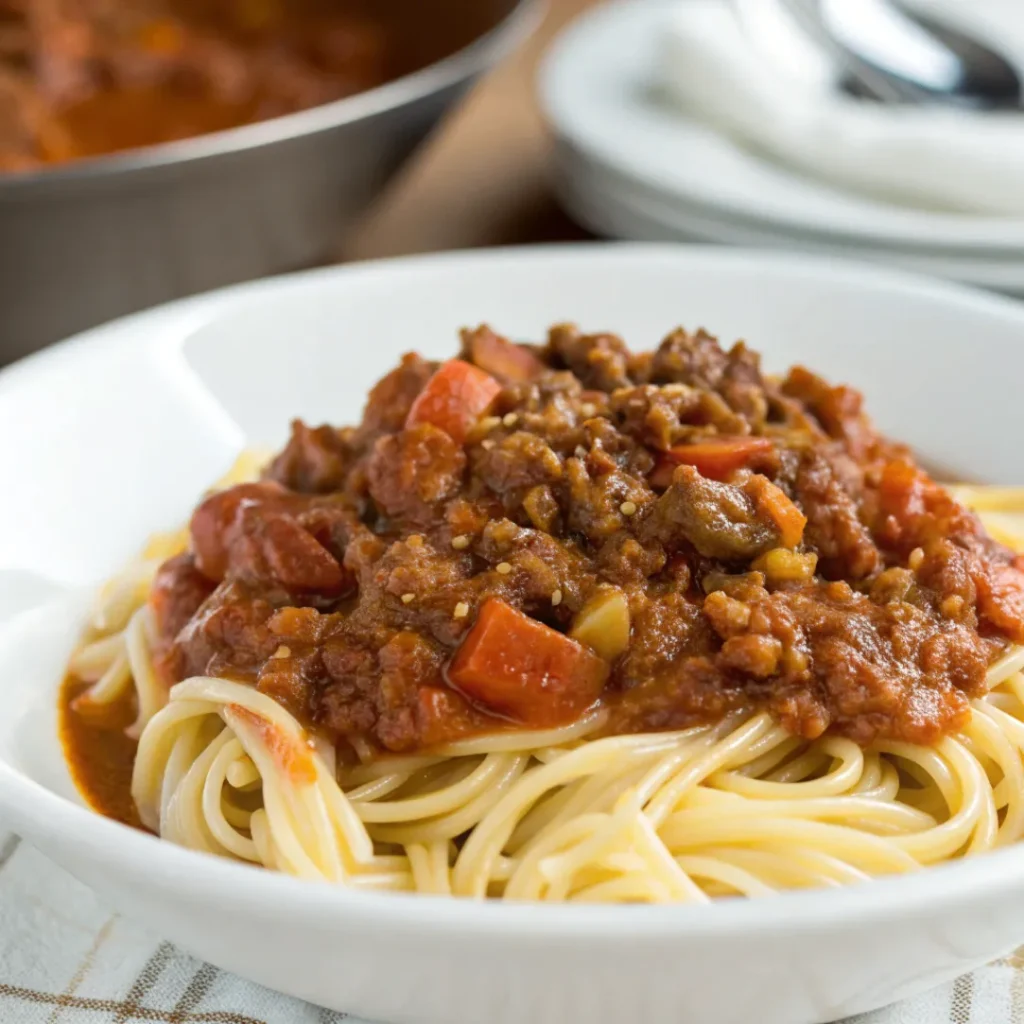
Pro Tips for a Perfect Ragu Sauce
Finely chop vegetables so they melt into the sauce
Let tomato paste toast for depth of flavor
Use a wide pot to allow proper reduction
Do not rush the simmering process
Taste the sauce as it cooks and adjust seasoning
Add a splash of pasta water before serving to help the sauce cling
Why You Will Love This Recipe
You will love this ragu sauce because it brings together simplicity, depth, and comfort. It is hearty enough for cold winters in the Midwest, rich enough for gatherings on the East Coast, and versatile enough for busy weeknights anywhere in the United States.
This ragu sauce delivers restaurant quality flavor while staying practical for the home cook. It is dependable, family friendly, and satisfying in every way.
What Makes This Recipe Unique
This recipe balances tradition with modern American convenience. It uses authentic slow simmering methods while remaining flexible with ingredient options that suit American shopping habits. The milk at the end adds a creamy finish that sets this ragu sauce apart and gives it a signature smooth texture.
The simplicity of the technique makes it accessible for beginners, while the depth of flavor satisfies more experienced cooks.
Frequently Asked Questions
How long can I store ragu sauce
You can store ragu sauce in the refrigerator for up to five days. The flavor intensifies over time, making leftovers even better.
Can I freeze ragu sauce
Yes. Ragu sauce freezes extremely well for up to three months.
What pasta pairs best with ragu sauce
Traditional Italian options like tagliatelle and pappardelle are excellent, but American favorites like spaghetti, rigatoni, and penne also work beautifully.
Can I make a vegetarian version
Yes. Use mushrooms, lentils, or plant based ground meat to make a rich vegetarian ragu sauce.
Do I need wine
Wine adds depth, but your ragu sauce will still taste delicious without it.
You Will Also Love
Creamy Spinach and Mushroom Orzo
Mediterranean Chicken Enchilada Casserole
Delicious Baked Cod in Coconut Lemon Cream Sauce
Homemade Italian Beef Sandwiches
Easy Moroccan Vegetable Soup
Conclusion
Ragu sauce is one of the most comforting and satisfying dishes a home cook can make. It brings together simple ingredients, slow simmering, and deeply layered flavor in a way that feels timeless. For American kitchens, this ragu sauce is the perfect blend of convenience and tradition.
Whether you serve it on pasta, layer it in lasagna, or use it for meal prep, it always delivers. This recipe celebrates everything great about homemade cooking and invites you to make it again and again.
Don’t forget to share your creations with #BeesRecipes on threads . We can’t wait to see your delicious take on this Middle Eastern classic!
There are no reviews yet. Be the first one to write one.

